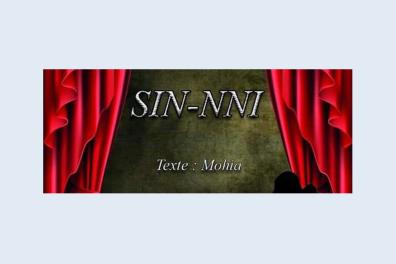International symposium: "Le théâtre berbère. Analyse textuelle et esthétique", October 4

Tuesday, October 4, 2022 - 09:00-18:00 - Auditorium Dumézil
Inalco - Maison de la recherche - 2, rue de Lille, 75007 Paris
Part of the conference will take place remotely.
Connection methods:
Topic: OCTOBER 4 International colloquium "Berber theater. Analyse textuelle et esthétique " LACNAD INALCO
Time: Oct 4, 2022 09:00 Paris
Join Zoom Meeting
https://us02web.zoom.us/j/82338915514?pwd=V2s4dHVCVDJETTBQN0VtaytZQTAwZ…
Programme (151.65 KB, .pdf)
Contact: View e-mail and View e-mail
Berber theater. Textual and aesthetic analysis
The transformations that have emerged in the Amazigh (Berber) socio-cultural field have contributed to a proven literary and artistic revival, which finds expression in current theatrical productions, among others. By overcoming the difficulties of written communication between authors and Amazigh audiences in a context still strongly marked by orality, theater is becoming a field for artistic experimentation and a powerful means of social criticism and identity-building. We are witnessing a renewal of theatrical forms and themes in the interplay between orality, writing and visuality/gestuality by authors inserted in several literary production circuits. While the men and women of today's Amazigh theater perpetuate ancient traditions (halqa, rites, masquerades), they are also involved in the current context characterized by the interaction of genres and media. A central role in this renewal is obviously played by school education and knowledge of the genres and works of international theater. Theater, in the form of a play performed by actors in the enclosed space of a hall, is indeed a genre linked to international influences. With the first plays in the Maghreb dating back to the early 20th century, experiments with theater performed in Berber came to prominence in the 1970s with Kateb Yacine's troupe who, in Mohamed prend ta valise, used dialectal Arabic and Kabyle Berber (taqbaylit) to connect with Algerian audiences. At the same time, Muhand U Yeḥya was publishing his Kabyle adaptations of international plays with a major influence from European theater (Beckett, Brecht, Molière, Pirandello). Over the course of the 20th century, Amazigh theatrical production in the Maghreb and diaspora increased, and a large number of plays were performed by professional and amateur actors, with several pupil and student troupes established throughout the Berber-speaking regions. Although theater often remained in the realm of "performance", a number of plays also appeared in print, for example those by Moumen Al Safi, published in the 1980s, and considered the beginning of modern Amazigh theater in Souss (Morocco).
Our international symposium on Amazigh theater will be an opportunity to develop a nuanced discourse on the ambitions of Amazigh theater and its textual and aesthetic analysis, addressing several open questions concerning its current development: What are the contemporary plays and creators/actors? What is the language of plays? Is the debate between everyday language (with borrowings from Arabic and French) and standardized, "purified" language (recovering old, obsolete words and renovating the vocabulary of the local variant with neologisms) still an issue for the work of Amazigh theater creators and actors? Is there a renewal of themes and characters? Is the contribution of international theater diminishing or increasing? What is the role and position of actresses and female characters in contemporary Amazigh theater? Have the new social, political and economic conditions for Berber in the Maghreb after the 2000s led to a revitalization of Amazigh theater?
The publication of the symposium proceedings is planned, with papers submitted for peer review.